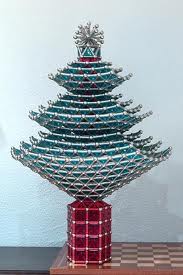Depending on your household traditions, your Christmas tree ornaments could be the ones that have been passed down through generations, or ones that you picked up from the corner store! Either way tree ornaments can represent all that you love about Christmas without being traditional. While Christmas ball ornaments are beautiful, how about ideas for ornaments which represent your family, your kid’s, a hobby, or even a past time that you love? Here are ways to decorate your tree without using traditional ornaments.
Festive foods: Believe it or not, food items make great ornaments! From baked cookies to homemade candy ornaments, festive foods that are part of your family’s Christmas traditions are personalized and yummy looking! Visit your local craft store and ask for a spray-on preserver or paint-on liquid lacquer that can be brushed on the food to preserve it. Gingerbread, marshmallows, and ribbon candy can be strung into beautiful ornaments that will add whimsy to your tree.
Non-traditional colors: Similarly to our post about decorating your home without the traditional red, ornaments can be hot pink to turquoise! Look around your home and fit your ornament color scheme into your décor. Choose colors from your furniture, walls, or even a piece of art work and draw that theme into hand crafted ornaments or find matching ribbon and tie bows around your Christmas tree branches.
Family memories: Consider using small family pictures, kid’s school arts and crafts projects, or even seashells from your last family vacation to the beach for ornaments. Family mementos make beautiful ornaments and they give your tree a purpose: a place to display all that your family holds dear. Start a family tradition and make an ornament each year that represents the past year. You will be surprised how fun it will be each year to bring out memories when decorating the next year’s tree.
Holiday ornaments are a tradition, as is the Christmas tree itself. See if you can be unique this year in your festive decorating, and consider nontraditional ornaments. While the classic ornaments can still be used as background, consider unique ornaments to take center stage on your tree. Try having each family member create an ornament for themselves or for another family member. How exciting your tree will look each year when it is a potpourri of eclectic ornaments and styles.























































